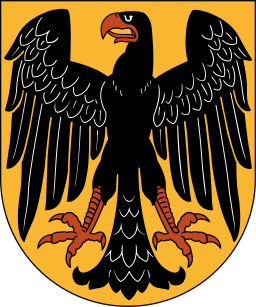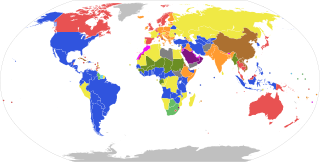
The Weimar Republic is an unofficial historical designation for the German state from 1918 to 1933. The name derives from the city of Weimar, where its constitutional assembly first took place. The official name of the republic remained Deutsches Reich unchanged from 1871, because of the German tradition of substates. Although commonly translated as "German Empire", the word Reich here better translates as "realm", in that the term does not have monarchical connotations in itself. The Reich was changed from a constitutional monarchy into a republic. In English, the country was usually known simply as Germany.
Article 48 of the constitution of the Weimar Republic of Germany (1919–1933) allowed the President, under certain circumstances, to take emergency measures without the prior consent of the Reichstag. This power was understood to include the promulgation of "emergency decrees ".

Presidential elections were held in Germany on 29 March 1925, with a second round run-off on 26 April. They were the first direct elections to the office of President of the Reich, Germany's head of state during the 1919–33 Weimar Republic. The first President, Friedrich Ebert, who had died on 28 February 1925, had been elected indirectly, by the National Assembly, but the Weimar Constitution required that his successor be elected by the "whole German people". Paul von Hindenburg was elected as the second president of Germany in the second round of voting.

The 1932 German presidential elections were held on 13 March and 10 April. They were the second and final direct elections to the office of President of the Reich (Reichspräsident), Germany's head of state under the Weimar Republic. The incumbent President, Paul von Hindenburg, first elected in 1925, was re-elected to a second seven-year term of office. His major opponent in the election was Adolf Hitler of the Nazi Party (NSDAP).

Federal elections were held in Germany on 5 March 1933, after the Nazi seizure of power on 30 January and just six days after the Reichstag fire. Nazi stormtroopers had unleashed a widespread campaign of violence against the Communist Party (KPD), left-wingers, trade unionists, the Social Democratic Party of Germany, and the Centre Party. They were the last multi-party elections in a unified Germany until 1990.

Federal elections were held in Germany on 6 November 1932. They saw a four percent drop in votes for the Nazi Party and slight increases for the Communists and the national conservative DNVP. It was the last free and fair all-German election before the Nazi seizure of power on 30 January 1933, as the following elections of March 1933 were already accompanied by massive suppression, especially against Communist and Social Democratic politicians. The next free election was not held until August 1949 in West Germany; the next free all-German elections took place in December 1990 after reunification.

Federal elections were held in Germany on 31 July 1932, following the premature dissolution of the Reichstag. They saw great gains by the Nazi Party, which for the first time became the largest party in parliament but without winning a majority.
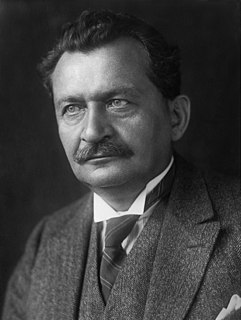
Federal elections were held in Germany on 20 May 1928. The Social Democratic Party of Germany (SPD) remained the largest party in the Reichstag after winning 153 of the 491 seats. Voter turnout was 75.6%.

Federal elections were held in Germany on 7 December 1924, the second that year. The Reichstag had been dissolved on 20 October 1924. The Social Democratic Party remained the largest party in the Reichstag with an increased share of the vote, winning 131 of the 493 seats. Voter turnout was 78.8%.
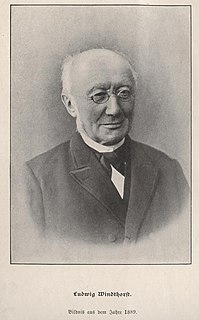
Federal elections were held in Germany on 20 February 1890. The Centre Party regained its position as the largest party in the Reichstag by winning 106 of the 397 seats, whilst the National Liberal Party, formerly the largest party, was reduced to 42 seats. Despite receiving the most votes, the Social Democratic Party won only 35 seats. Voter turnout was 71.5%.
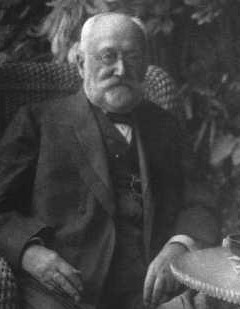
Federal elections were held in Germany on 16 June 1898. Despite the Social Democratic Party (SPD) receiving a plurality of votes, the Centre Party remained the largest party in the Reichstag after winning 102 of the 397 seats, whilst the SPD won just 56. Voter turnout was 68.1%.

Federal elections were held in Germany on 16 June 1903. Despite the Social Democratic Party (SPD) receiving a clear plurality of votes, the Centre Party remained the largest party in the Reichstag after winning 100 of the 397 seats, whilst the SPD won only 81. The voter turnout for the election was 76.1%.

Federal elections were held in Germany on 15 June 1893. Despite the Social Democratic Party (SPD) receiving a plurality of votes, the Centre Party remained the largest party in the Reichstag after winning 96 of the 397 seats, whilst the SPD won just 44. Voter turnout was 72.4%.

Federal elections were held in Germany on 12 January 1912. Although the Social Democratic Party (SPD) had received the most votes in every election since 1890, they had never won the most seats, and in the 1907 elections they had won fewer than half the seats of the Centre Party despite receiving over a million more votes. However, this election saw the party win more than double the number of votes of the second-placed Centre Party and become the largest party, winning 110 of the 397 seats.

Federal elections were held in Germany on 25 January 1907. Despite the Social Democratic Party (SPD) receiving a clear plurality of votes, they were hampered by the unequal constituency sizes that favoured rural seats. As a result, the Centre Party remained the largest party in the Reichstag after winning 105 of the 397 seats, whilst the SPD won only 43. Voter turnout was 84.7%.

Adolf Hitler's rise to power began in Germany in September 1919 when Hitler joined the political party then known as the Deutsche Arbeiterpartei – DAP. The name was changed in 1920 to the Nationalsozialistische Deutsche Arbeiterpartei – NSDAP. It was anti-Marxist and opposed to the democratic post-war government of the Weimar Republic and the Treaty of Versailles, advocating extreme nationalism and Pan-Germanism as well as virulent anti-Semitism. Hitler's "rise" can be considered to have ended in March 1933, after the Reichstag adopted the Enabling Act of 1933 in that month. President Paul von Hindenburg had already appointed Hitler as Chancellor on 30 January 1933 after a series of parliamentary elections and associated backroom intrigues. The Enabling Act—when used ruthlessly and with authority—virtually assured that Hitler could thereafter constitutionally exercise dictatorial power without legal objection.
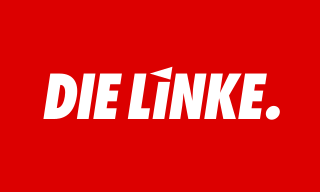
The Left, also commonly referred to as the Left Party, is a democratic socialist political party in Germany. It is considered to be left-wing populist by some researchers. The party was founded in 2007 as the result of the merger of the Party of Democratic Socialism (PDS) and the Electoral Alternative for Labour and Social Justice (WASG). Through the PDS, the party is the direct descendant of the ruling party of the former East Germany (GDR), the Socialist Unity Party of Germany (SED).
Maria Blum was a German politician ( KPD). Between November 1932 and February/March 1933 she sat as a member of the national parliament (Reichstag), representing Electoral District 12 (Thüringia).


